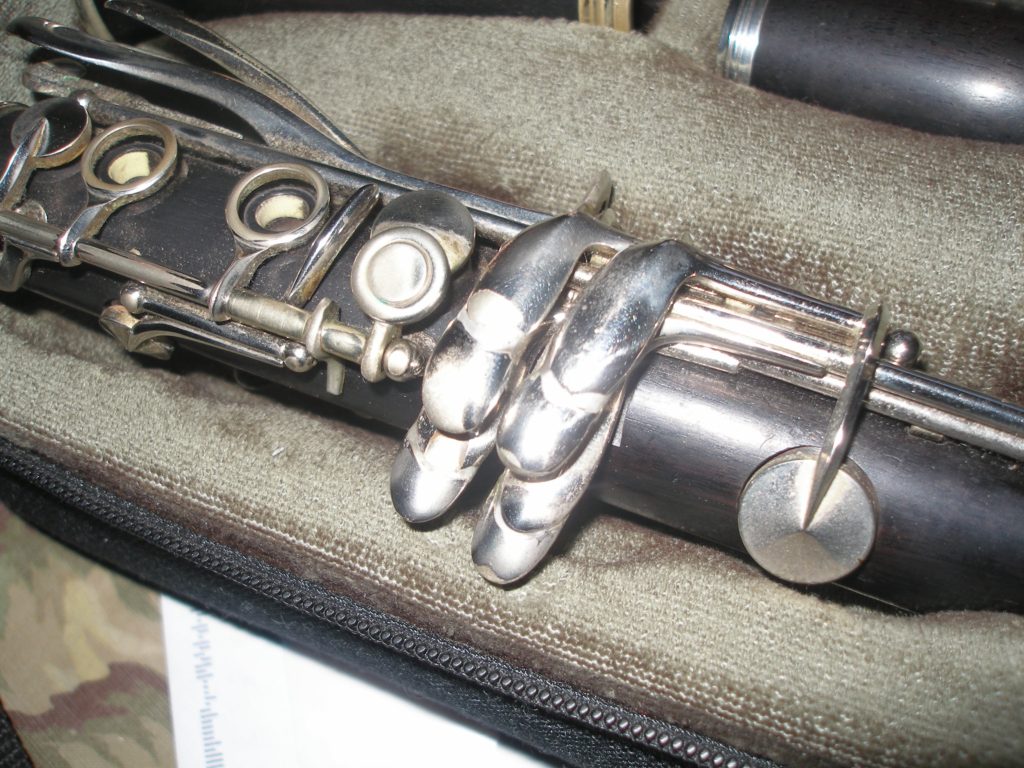Many years ago, while playing Assistant Principal and Eb clarinet in a major orchestra, I developed a very serious repetitive stress injury that threatened my career as a clarinet player. I took some time off from the job but ultimately decided to resign–I wanted to make sure that I’d be able to play in some capacity for the rest of my life and not sacrifice my long term ability just to keep my current orchestra position.
This was a hard decision because, really, all I’d ever wanted from the time I was in high school (and through my conservatory years) was a professional
orchestra gig. However, as is so often the case, not only was it the right decision but I truly came to see my injury as a great gift.
I was diagnosed with dystonia of the right hand when the field of music medicine was just beginning. A focal dystonia is what used to be called Writer’s Cramp where, in my case, the fourth and fifth fingers of my right hand neither worked independently of each other nor worked together. Unlike tendonitis there is often nothing physically “wrong”– no inflammation that ibuprofen would knock out, no weakness that physical therapy would strengthen, etc.
Without getting too technical, it’s a neurological disorder where the message to move a particular muscle gets short-circuited from the
brain to the finger. I was devastated.
I went to one of the very first clinics for performing artists called The Miller Institute. It was in NYC and was affiliated with St. Lukes Roosevelt Hospital. In addition to learning how to avoid future injuries–stretching, frequent breaks while practicing, varying practice routines, proper posture and alignment, etc (all strategies that are now commonly known and widely disseminated)–they encouraged the practice of modifying the instrument to fit the hand. This is the exact opposite of how we’re taught from the very beginning which is to force our hands and body over time to fit the permanently fixed instrument.
Try this: — Put your right arm at your side. Now raise it up from the
elbow without moving your wrist or fingers. You’ll notice that your wrist is pretty straight and your fingers are slightly curved. This is the most natural position for your clarinet playing hand.
You can look at the photo of my clarinet to see how I made the adaptations: extensions were put on all the pinky keys so that the pinky, which is shorter and weaker than the other fingers, doesn’t have to reach out so far; a cup with a pad was put over the G/D tone hole so that the ring finger doesn’t have to reach out as far as the middle finger. I also had a left hand Ab/Eb key added so that my left pinky could share that burden. Many clarinets now routinely come with that key.

The upshot? My fingers adapted almost immediately to the modifications and, because of the resulting new position of my hand, the dystonic response was almost completely mitigated. I played principal clarinet for the next 25 years in orchestras and opera festivals, played chamber music, taught, began my solo klezmer career–all without anyone knowing there had ever been a problem. And what was the gift?
If I had been locked into a full-time orchestra job I never would’ve begun playing klezmer and, hence, never would have experienced the unfathomable creative outlet it became for me. This is a lesson I live every day — what seems like a curse can actually be a wonderful blessing.
Here are some links that may be helpful as you navigate your way through an injury:
National Dystonia Foundation
https://www.dystonia.org.uk/what-is-dystonia
Musicians Health.com
https://www.musicianshealth.com/
Stephen Fox — custom clarinet repairs:
http://www.sfoxclarinets.com/Woodwind_Repair.html
See my other related post: Dealing With An Injury Related To Your Instrument – Part II